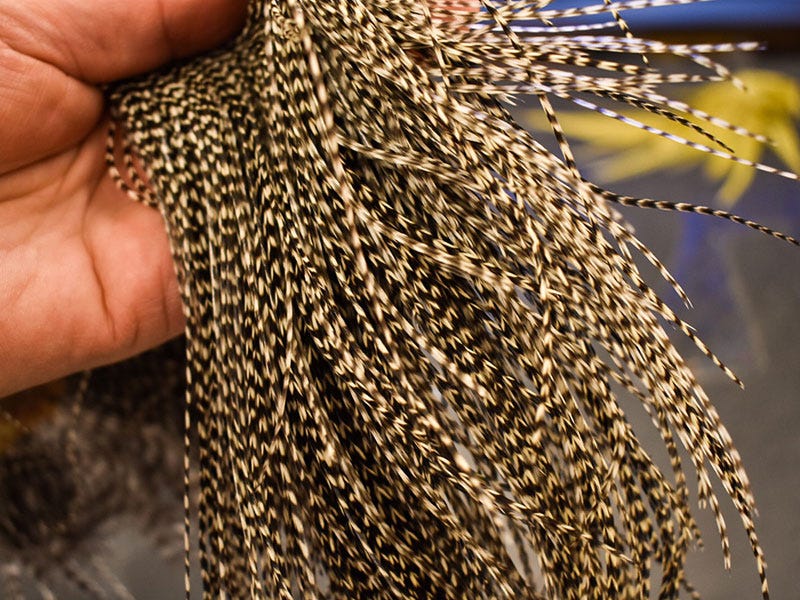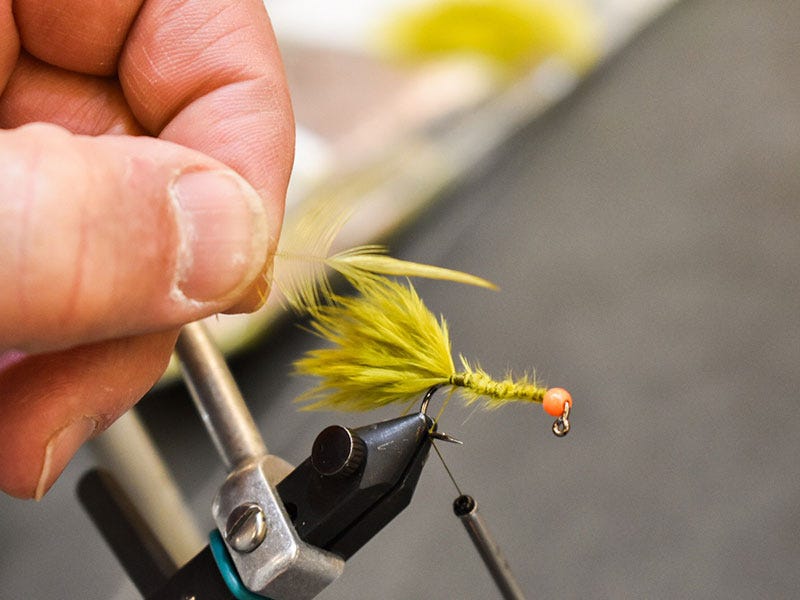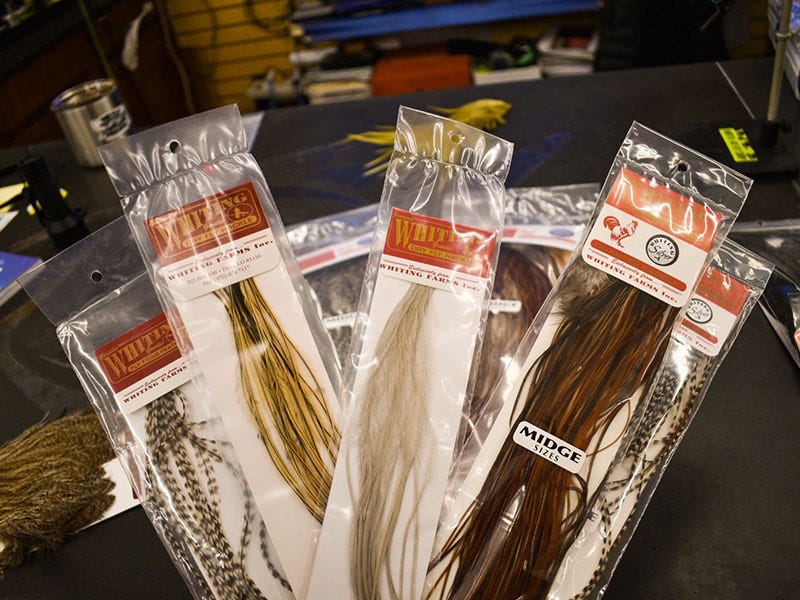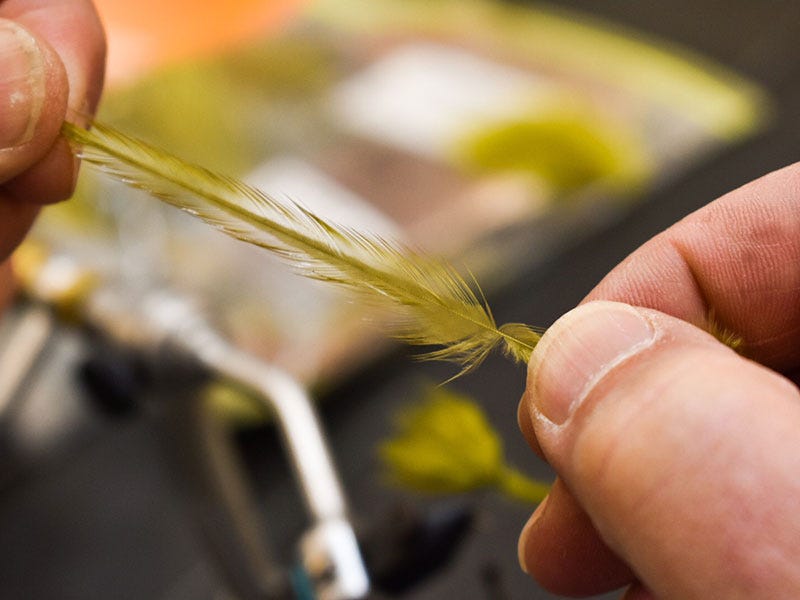Hackle – A Fly Tyer's Guide


Tying flies isn’t a new art. Since before Victorian times, people have been twisting fur and feathers around crude hooks, using materials commonly swept off of barn floors. A lot of time has passed since then and a lot of things have changed. Hooks are now made in large factories. And, fur and feather farms produce a consistent product while industry leaders set the standard. Companies like Umpqua and Whiting lead the way helping to evolve what was once a niche activity into a more widely known obsession.
What's setting the standard in fly fishing right now? Here are our top 5 picks from IFTD.
Up until the late 1960s, there was no industry standard, other than… awful. Hackle that was used was imported from Asia from what they called “village chickens”. Consistency didn’t exist, and the highly sought-after grizzly pattern was unseen. Enter Oregon fisherman and fly tyer, Henry Hoffman.
In the 1960s, Hoffman’s desire for a high-quality grizzly hackle sparked the idea of selective breeding for high-quality materials. With the help of his friends and the need for quality, Henry set out across the Pacific Northwest in search of the best birds he could find. He began with a trio of Barred Plymouth Rock Bantams that kick-started not only his breeding stock but his empire.

For fifteen years Henry focused on the grizzly pattern. Roosters that produced the best feathers were specifically selected for breeding. It was from then on, that things only got better. By focusing on quality and not quantity, Henry’s company remand small and manageable yet, at the same time, this put his high-quality products in high demand. While his company was building steady steam, other people caught onto the idea of selective breeding for hackle and more companies entered into the competition. Yet, none could compare to what Hoffman was producing, and, to this day, none can compare to what is produced now.
In the 1980s, Henry decided it was time to retire and spend his time doing what he’d been doing from the beginning. Fishing. For five years his company sat with a “For Sale” sign on it until Dr. Thomas Whiting of Colorado made him a deal. Whiting took on Henry’s company with several degrees in his pocket; including degrees in poultry genetics and husbandry, making the purchase a great fit. In the end, Whiting took a company that produced 5,000 birds a year and turned it into a company with two major facilities in Colorado that produced over 60,000 birds a year.
Since Thomas Whiting’s takeover in the 80s, the company now has 10 major genetic lines including; Coq de Leon from Spain, giant guinea fowl, and partridge just to name a few. With these genetic lines, Whiting is producing over 80 different hackle products to suit the needs of every tyer. In addition to providing quality products for those who either tie their own flies or purchase from fly shops around the globe, Whiting also supplies materials to several large corporate fly companies.
Why is Whiting so Sought After?
There are many reasons “why” Whiting is the most sought-after hackle in the business. Finding hackle that you are able to tie six to eight flies out of one feather is a rarity, but not with Whiting. The stiffness of a hackle is also important for how a fly will float. Whiting’s hackles are known for their consistency from stem to tip in having stiff barbs but still being pliable to palmer with. The stiffness of the barbs is what allows flies to create surface tension and float better. This also allows you to, depending on the fly, use less hackle to achieve this. If you are tying super realistic tailwater dries to impressionistic big bugs, you can count on Whiting hackles to keep your bug floating high and dry longer than other hackles. Plus, having a broad spectrum of grades to choose from is great too.

From bronze, silver, gold, or platinum there is a hackle out there graded and priced correctly for whatever you may need. The color selection is incredible too. If there is an aquatic bug or terrestrial out there that you are trying to imitate, then there is a color to match it. From green drakes, sulphur duns, pale morning duns, and caddis, there is a hackle color that will for sure match the hatch for you.
Looking for sought-after Whiting materials? Order online here.
Another great thing about Whiting, if you are a new tyer, is that they have done a lot of the hard work for you. For example, Whiting has 100 packs. These are awesome packs that are pre-sized for the fly you are going to tie, versus getting a cape or a saddle and then having to select the hackles out yourself. This can be somewhat time-consuming and, for a novice, difficult to do, especially if you aren’t sure what you are looking for.
When I started tying flies commercially in the mid-90s, I typically was only getting capes and rarely getting good saddles to tie with. As time went on we started getting more of the saddles, from what is now Whiting, and that was a game changer for me. It really sped up the whole process and helped minimize waste. If you have tied with capes, you know that it is inevitable that the tapered feathers will cause some waste and you will not be able to utilize the whole feather. Whereas with a saddle piece, you can nearly use the whole feather. With capes though, you have a broader selection from big to small sizes to choose from. Saddles will have two to three main sizes throughout the saddle and are bred this way on purpose. Bang for buck, you are best off buying a full saddle or cape. There are 1/2s and 1/4s available, but the price goes up per quantity (or what you can yield) for these.
Knowing the history of these feathers really makes you appreciate and understand how much has gone into this art of tying. I have been fortunate to watch the progression of this company and see how they have really catered to each region, not just the United States but Internationally too.
What is Gauging Hackle?
Gauging hackle is what we call when we are sizing or matching the proper size feather to the hook you will be tying on. There are hackle gauges that you can purchase and attach to your vise or bench that are super easy to use. Basically, take a feather and wrap it around the stem on the gauge and splay out the feather. Where the tips end, is what will tell you what size hook to match up. It is a very handy tool. It is not expensive and all skill levels of tyers should have one. As you tie flies, your eye will become educated as to what hackles are what size.

When I have taught folks to tie flies, I try not to be too be limiting on creativity. You are the artist and it is your fly, you can tie however you want to suit your needs. For instance, say you are out of size #14 hackle and all you have is #12. Will it work? Sure! It’s okay to fudge it a little one way or the other. There is balance though and learning proportioning with your flies will help with how some of the flies will “fish” or sit in the water. If you get too carried away with certain patterns and your proportioning is not good, the fly may not sit the way you want it to in the water.
Ever tie flies with materials you won't find at the fly shop? Read this.
The really beautiful thing about Whiting is that these guys have spent years, even decades, perfecting these feathers to do a certain thing. Talk with other local tyers in your region and see what they think works for them or how they like to build a certain fly. You may start to see a trend or commonality that you may want to adopt in your flies or borrow from. This is what makes fly tying so fun. No one fly is really the same from tyer to tyer. We all like to put our own creative spin on them. There are tons of books, videos, and tools out there to help you along the way in fly tying. Gauging is really a basic guide that is used to get you headed in a consistent direction.
